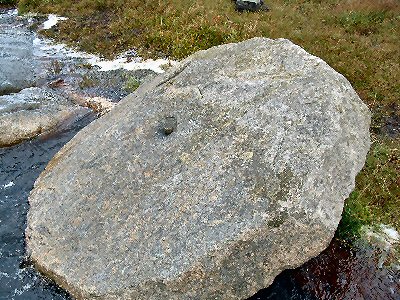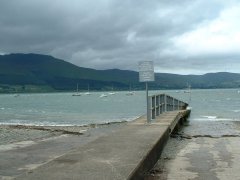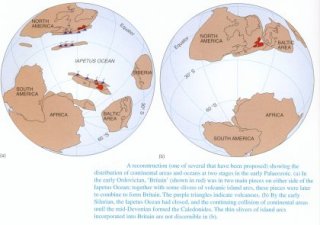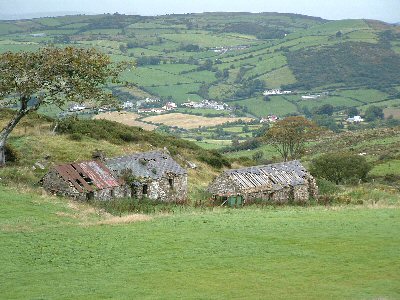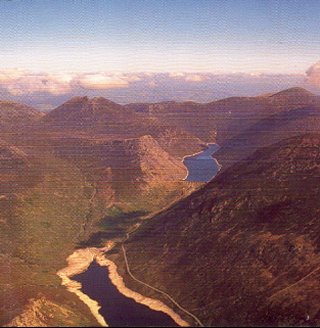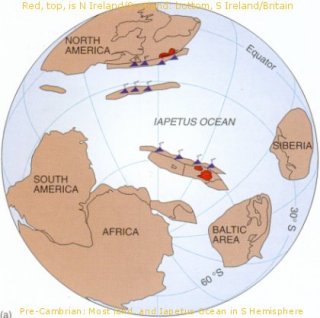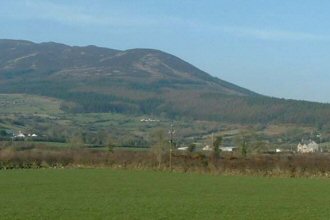Earth is about four thousand seven hundred million years old. Rocks, the subject of geology, are regularly re-cycled and the oldest known surviving rocks (in Greenland) are some three billion years old.
Geology
Structure of the Universe
Imagine standing on Warrenpoint beach looking towards Greenore. You may dip your toe in the water but from this experience alone you must deduce – without travelling on or over the sea – the nature of water, and of sea-water, of seas and oceans and currents, their total volume and extent, their composition, what plants, animals and inanimate objects are found in the sea, and the nature of the sea-bed.
Drumlin Country
The Quaternary Period of the last 1.6m years has been marked by Ice Ages which were punctuated each 100,000 years or so by inter-glacials like the one we are presently in.
Tilt, Wobble, Stretch Earth
The ’tilt, wobble and stretch’ of planet Earth on its celestial path contribute to long-term variation in environmental conditions that determine whether and where on Earth life can thrive or even be sustained.
It was a Yugoslav scientist who first closely studied these variations and proposed a theory based upon them, and named for him, the Milankovitch cycle.
Geology of Armagh
The Ring of Gullion, an igneous, intrusive, granitic rock, dominates the south-east portion of this map. What is perhaps more remarkable is the Newry Granite [white] that has intruded into the centre of the Ring!
The North of Co Armagh, bordering Lough Neagh, is dominated by estuarine clay [tan]. This owes its origin to successive Ice Ages, but mainly the most recent. The melted glacier that dominated the landscape there left the Lough when it melted and created the overflow drainage channel that now constitutes the route of the Newry Canal.
All other rock types here are sedimentary [the only metamorphic rocks in North Ireland are the schists of the Sperrins and Donegal gneisses] and were created over hundreds of millions of years, when this land was south of the equator and much of it submerged beneath equatorial oceans. The terms Ordovician [green] Tertiary [blue] Silurian [lime] etc. refer to periods of Earth History.
Apologies for the roughness of the drawn map: I only had children’s crayons to work with!!
Leod Quarry
This working quarry near Hilltown is interesting for a variety of reasons. It contains a unique seam of rock that is currently very valuable in many aspects of the building industry. Its rock is blocky, hard, sharp and slightly flinty in texture. The homogenous blocks are contrasted with, for example, the fissilated [wafer-like] shales more common to the region. Its grain size is smaller than the average. It is under the ownership and excellent management of P Fitzpatrick Quarries who are fully aware of the valuable resource and practice good environmental control.
Steps in Earth History
The origin, nature and conditions required for the proliferation of life forms remains one of the great unsolved mysteries of science. One possibility receiving serious consideration is that the earliest life forms came to us from space – perhaps from a nearby planet like Mars (and hence the interest in the experiments on that planet of the Mars rover vehicle Spirit).
Geology: United Ireland
One hundred million years [100,000,000 years] is a small step in geological time, barely enough for mountains to ‘fold’ or erode, or oceans to open/close. Yet it is possibly too great a time for the human mind to comprehend.
